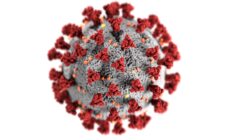Pneumonia is an infectious disease of the lungs. It is the most dangerous lower respiratory tract infection. The inflammation of alveoli of the lung disturbs oxygen supply mechanism. Pneumonia can affect everyone regardless of age factor. Elderly person and infants with low immune power are most likely to face serious consequences of pneumonia infection.
Causes:
Pneumonia has bacterial, viral and fungal causes. Pneumonia is classified according to the causes as follows.
Bacterial pneumonia:
Bacterial pneumonia are caused by the bacterium such as STREPTOCOCCUS PNEUMONIAE KLEBSIELLA PNEUMONIAE MYCOPLASMA PNEUMONIAE LEGIONELLA PNEUMONIAE CHLAMYDIA PNEUMONIAE
Viral pneumonia:
Viral pneumonia is caused by the viruses such as ADENO virus RHINO virus INFLUENZA virus PARAINFLUENZA virus Respiratory SYNCYTIAL virus
Fungal pneumonia:
The fungal infections causing pneumonia are HISTOPLASMOSIS COCCIDIMYCOSIS BLASTOMYCOSIS ASPERGILLOSIS CRYPTOCOCCOSIS
Risk factors for pneumonia:
The risk factors responsible for the cause of pneumonia are Age – pneumonia occurs irrespective of age. But mostly the old aged people and infants with low immunity are affected. Chain smoking – smoking continuously will damage the immune systems fight against bacterial and viral infection causing pneumonia. Alcohol addiction – excess intake of alcohol disturbs the immune mechanism and increase the chance of pneumonia. Chronic obstructive pulmonary disorder (COPD) – makes the infection of pneumonia easier. Few conditions – HIV, asthma and emphysema are most likely risk factor for cause of pneumonia. Even the heart and lung disease also contribute to the cause. Drugs – few drugs taken mainly the immune suppressant drugs are more likely to cause pneumonia. Mal nutrition – intake of less nutritious food will definitely reduce the immune power. Chemicals – direct contact or exposure to the harmful chemicals can increase the risk of pneumonia. Pollutants – exposure to certain pollutants or toxic substances increases the risk of pneumonia. Hospitalization – patient in the ICU and being hospitalized for long period are more vulnerable to attack of pneumonia causing organisms.
Symptoms of pneumonia:
The most commonly seen symptoms are Cough – commonly seen as dry or with thick mucus, sometime seen with blood in it. Chest pain and discomfort. Shallow breathing – even feel breathlessness at resting position. Rapid heartbeat – the heart beat tends to rise faster. Generalized fever. Shaking or shivering chills. Loss of appetite – reduction in the desire to eat. Lack of body energy. Excessive sweating. Severe head ache. Muscle aches. Joint pains. Diarrhea and vomiting Mental confusion. Fatigue – excessive tiredness.
Diagnosis:
Patient history: The history of the patient is very important in diagnosing pneumonia. Doctors clearly check the history to rule out the other lung diseases and detect the risk factor involved. Physical examination: Stethoscope is used to detect the pneumonia presence. Crackling sounds heard in the lying position indicate the presence of pneumonia. Percussion test – check for the normal drum like sound when chest is tapped lightly. Abnormal dull thuds like sound indicate pneumonia. Abnormal low pitched resonant sound also shows the presence of pneumonia.> Blood test: White blood cells counts are seen in increased level indicating pneumonia. Detection of antibodies – shows the infection in the body and the immune response. Some blood culture is done to detect the specific organism. Arterial blood gases are checked for the detection of reduction in oxygen supply mechanism. Polymerase chain reaction – this test is done to diagnose pneumonia by the detection of copies of the RNA genetic material of the bacteria. Chest x-ray : The x-rays show pneumonia by presence of white patched area in the lungs. It also clearly shows the effusion and abscesses due to pneumonia. CT SCAN and MRI SCAN: This imaging tests show the lung tissue damage and presence of abscesses in the lung due to infection of certain bacteria. Lung biopsy: Lung tissue is taken and tested under microscope to detect the infection. Sputum culture: Sputum is checked for the infection of virus or the bacteria.
Treatment:
Antibiotics: The doctors mainly choose antibiotics as the best way of treating pneumonia. Various antibiotics are available for all bacterial infection. Doctors decide the suitable antibodies for the patient according to his condition. Some commonly used drugs are CEFAZOLIN AMOXICILLIN MOXIFLOXACIN AZTHIROMYCIN CLARITHROMYCIN CEFUROXIME CIPROFLOXACIN LEVOFLOXACIN METRONIDAZOLE CEFDINIR These are only few drugs suitable for certain infection. Some drugs have side effects and should be changed according to doctors advice. Anti viral: Antibiotics are not effective against the viral attack. Anti viral drugs are administered. To reduce the feverish condition ASPIRIN and IBUPROFEN are used Only in the severe condition of pneumonia hospitalization are required.
Life style changes:
Doctor’s prescription should be strictly followed. Avoid dehydration by drinking lot of water. Rest is needed until recovery and even after that. Regular checkups are needed to see the progress in treatment. Stay away from work or other activities until full recovery is obtained.
Prevention of pneumonia:
Vaccination is the best way of preventing pneumonia and other viral infections. Always be cleaned and protect yourself from germs attack. Eat healthy nutritious food. Stay away from the infected persons. Rest is always helpful for the body to recover and function normally. Daily exercise with plenty of rest is needed for the immune system to be active. Avoid smoking which pay easy way for lung infection. Get proper treatment for other condition of the body.
Conclusion:
Pneumonia is one of the common diseases causing death in the infants all over the world. Pneumonia is treatable and curable. Every nation is finding the cure by awareness creation on vaccinations and suitable antibody administration.





